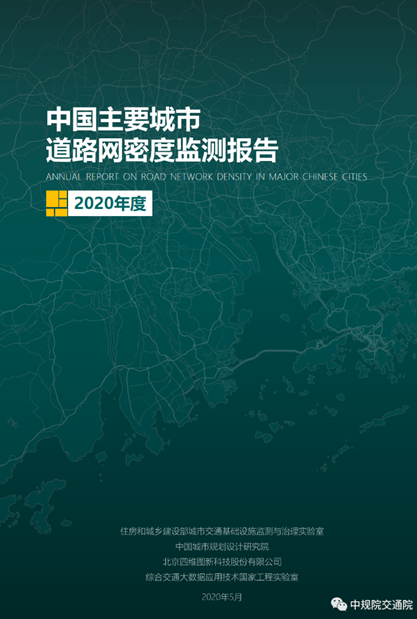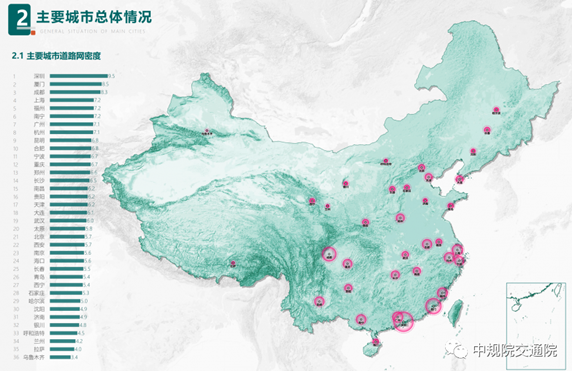On May 28, NavInfo Co., Ltd., the Urban Traffic Engineering Technology Center of the Ministry of Housing and Urban-Rural Development, the China Academy of Urban Planning and Design and the National Engineering Laboratory of Integrated Traffic Big Data Application Technology jointly released the Annual Report on Road Network Density in Major Chinese Cities of 2020 (hereinafter referred to as “the Report”). The report was made with the support from Cennavi, the big data company of NavInfo Group, which had provided relevant map data and big data analysis, etc.

Figure 1 – Cover of Annual Report on Road Network Density in Major Chinese Cities
Based on the Annual Report of 2019, the Annual Report on Road Network Density in Major Chinese Cities of 2020 continues to track and monitor the development of road network density in 36 major cities across the country, including 4 municipalities directly under the central government, 27 provincial capitals and 5 cities with separate plans. Additionally, the Report includes 23 new prefecture-level cities in the three major urban agglomerations, i.e. Beijing-Tianjin-Hebei Region, Yangtze River Delta and Guangdong-Hong Kong-Macao Greater Bay Area, as monitoring cities in this year.
As of the fourth quarter of 2019, the overall average road network density in 36 major cities in the country is 6.1 km/km2, with an overall increase of about 1.7% compared with that value (6.0km/km2) in 2019, with a growth rate of 1.2% higher than that from 2018 to 2019. There is still a certain gap between the current density and the goal proposed in the Several Opinions on Further Strengthening Urban Planning and Construction Management, "By 2020, the average road network density in urban built-up areas will increase to 8 km/km2".

Figure 2 – Overview of Road Network Density in Major Cities
Based on the road network density monitoring data for two consecutive years from 2019 to 2020, the road network density of 36 major cities and their administrative regions in the country mainly shows the following characteristics:
2. The road network density in all cities grows steadily, with Taiyuan, Xining and Nanning growing more rapidly.
3. The new urban areas on the outskirts of the cities are still the main areas that drive the increase of the road network density.